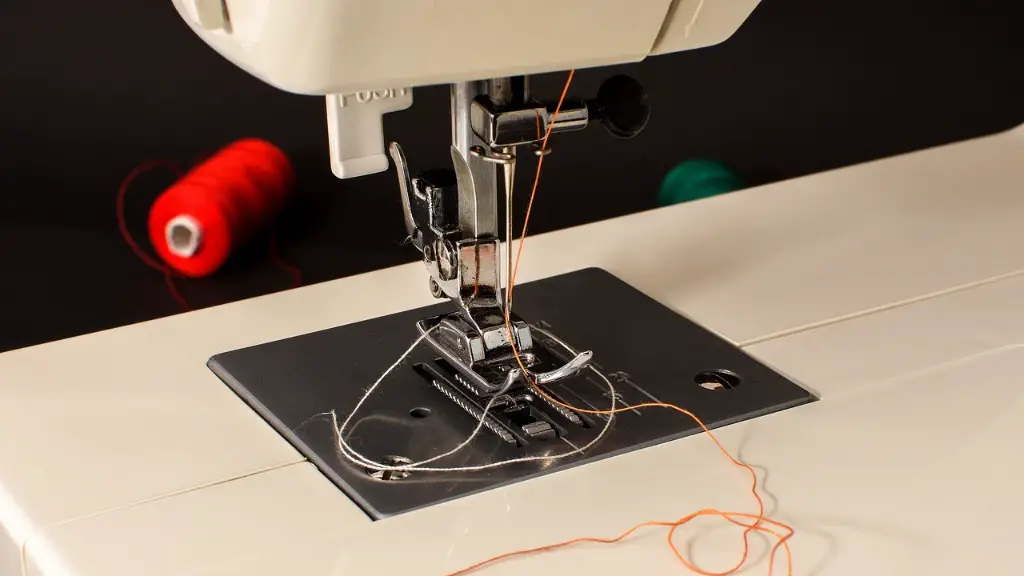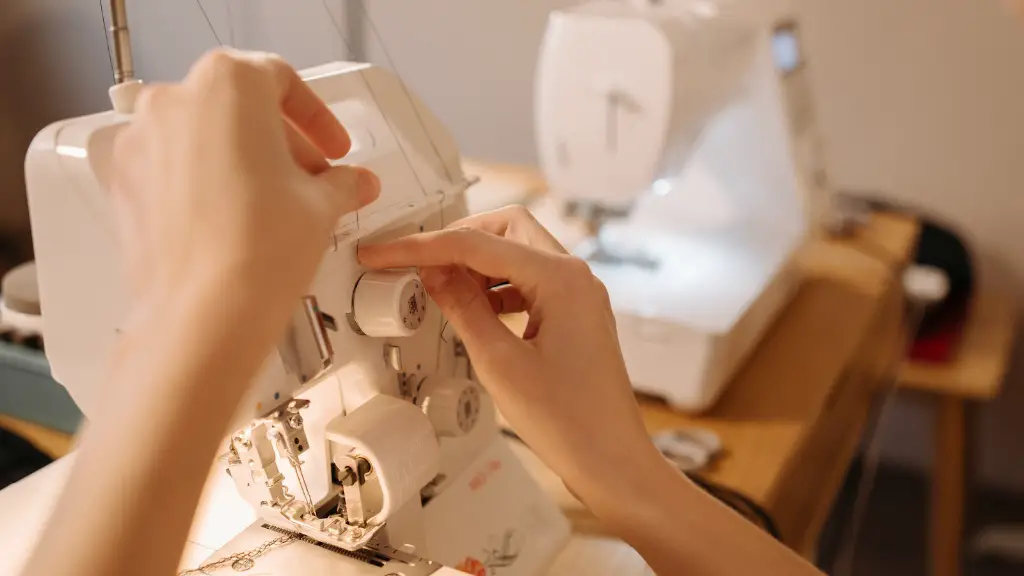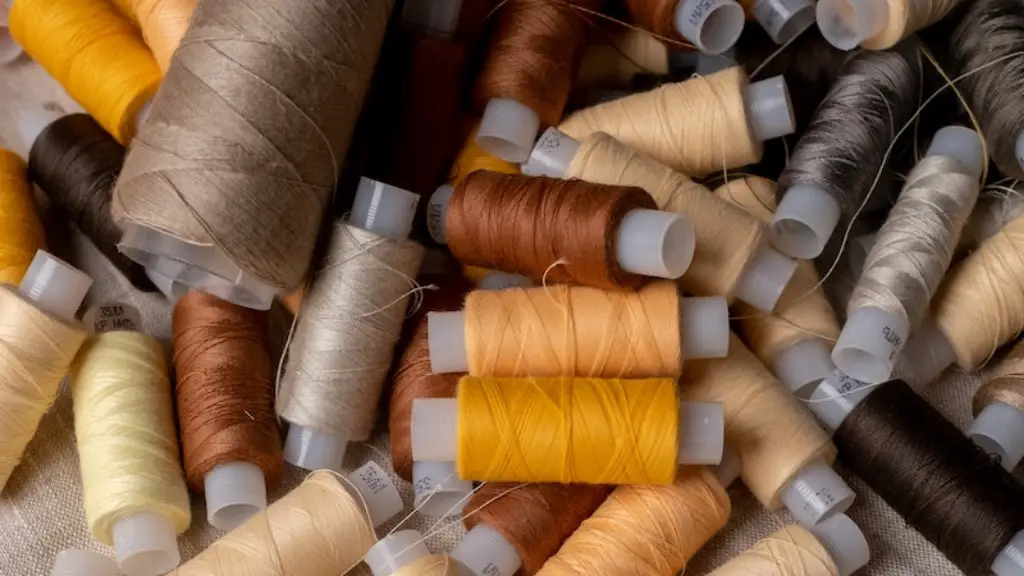Basic Use
A sewing machine is a must have item for creating and tailoring custom clothing items. For the avid clothing crafter it can be used to join fabric pieces together using various stitches. A basic stitch, often referred to as a straight stitch, is used to sew hems and darts. A zig-zag stitch gives more flexibility in terms of creating various clothing shapes and designs. One of the most popular design elements used is the gathering stitch, which can be used to give clothing garments a full and gathered look.
It is also possible to use a sewing machine for appliqué projects, which are the perfect way to add sculptural designs to clothing or fabric pieces. Basic machines will be able to create a running stitch which can be used for lingerie, t-shirts, and other light-weight garments. But for more intricate designs, an advanced machine is necessary. It is possible to use both decorative and utility stitches on more advanced models, using colors such as gold and silver.
It is also possible to sew embroidered designs onto clothing items using a special attachment. This attachment will allow the user to choose a design and then use the sewing machine to “draw” it onto the fabric. With this attachment, a vast array of styles are available, limited only by imagination.
A modern sewing machine can be used to seal fabric edges and trim to help create a professional-looking finish to any garment. With the choice of edging techniques such as decorative binding, hemming, and bias binding, it is possible to create a custom design with clean edges.
Quilting
Quilting is a popular hobby for many people, and with a sewing machine it is possible to create beautiful quilts in no time. It is important to choose a machine that is capable of handling multiple layers of material at once, as well as continuous stitching, rather than having to stop and start the machine throughout the quilting process. With the right machine, quilts can have intricate stitch patterns and a variety of colors.
Although it is possible to stitch quilt pieces together by hand, it can be time-consuming and tedious work. With a sewing machine, however, the process can be completed in a fraction of the time. Quilts can also be made with synthetic fill for added warmth and comfort.
Using a sewing machine for quilting adds a touch of creativity to the traditional, hand-stitched quilts. Creating different patterns and textures, or adding embroidered patches, creates a unique item that can be enjoyed for years to come.
Embroidery
Embroidering is a great way to customize clothing items and add a personal touch. With a high quality sewing machine and the right design, it is possible to create detailed designs with a high degree of accuracy.
Embroidery machines are able to accept a variety of fabrics and threads, which allows the user to create their own unique designs with ease. They come with different computerized software packages that allow the user to choose from hundreds of designs, from traditional knots and motifs to intricate shapes and abstract art. The software also allows the user to customize the size and the color of their design.
Embroidery machines offer a great way for beginners to learn the basics of embroidery, as well as providing a platform for more advanced crafters to explore their creativity. They also make great gifts, as they can be used to create unique items that can be cherished for years.
Repair and Alterations
With a sewing machine, it is possible to make repairs and alterations to clothing items. Whether it is replacing a damaged zipper, creating a hemline or taking in a waistband, the right machine can save time and effort.
It is also possible to make modifications and alterations to clothing items with a sewing machine, such as adding a sleeve or a collar, altering the length of a garment, or taking in the width of the fabric. It is also a great way to add style to existing garments by adding a decorative trim or appliqué.
When making repairs, it is important to choose a sewing machine that has adjustable settings for tension and stitch length. This allows the user to make precise adjustments to the fabric, allowing them to achieve an excellent finish. It is also important to select the correct type of needle for the task, as different fabrics require different needles.
Accessories
In addition to the basic components, there are a range of accessories that can be used with a sewing machine. These include foot controls, bobbins, specialty feet, and various types of presser feet. Presser feet are used to press down the fabric as it is being sewn, ensuring the stitches stay straight and even.
Some machines also come with specialty feet that are used for specific tasks such as piping, zippers, and hems. It is important to ensure that the machine has the right type of foot for the task, as a wrong type of foot can lead to uneven stitches and poor quality.
It is also important to choose the right size needle for the fabric and thread being used. Different fabrics require different sizes of needles, and choosing the wrong size can cause skipped stitches and other problems. It is also important to select a quality thread for the project, as this will ensure the stitches remain strong and secure.
Loading Thread
Once the correct needle and thread have been selected, it is important to make sure the machine is loaded with the thread correctly. This involves loading the bobbin with the same thread and then passing it through the thread guide and tension with the pedal. Once this is done, the thread should be wound around the bobbin, making sure that it is tight and secure.
It is also important to check that the presser foot is in the right position before sewing. This will ensure that the fabric is kept flat and the stitches will remain even. It is also important to ensure that the fabric is cut to the right size and shape before starting to sew.
Tension Settings
In order to achieve the best results when sewing, it is important to adjust the tension settings on the machine. This will depend on the type of fabric being sewn, as well as the type of stitch being used. It is important to read the machine manual before changing the tension settings, as incorrect settings can cause problems with the stitches.
Once the tension has been adjusted, the machine should be tested by sewing a sample piece of fabric. This will allow the user to check that the stitches are even and that the tension is correct. If the stitching is not even or the tension is too tight, the settings should be adjusted accordingly before sewing the main fabric.
Maintenance and Care
It is important to maintain and clean a sewing machine regularly in order to ensure the best performance. This involves cleaning the bobbin, the drive belt, and checking the tension. It is also important to lubricate the machine with a high quality oil, as this will help keep the mechanism running smoothly and stop it from squeaking.
It is important to maintain the machine regularly and to check for any damage or wear. If any parts are damaged, it is essential to replace them before continuing to use the machine. Regular maintenance and care will help ensure that the machine runs smoothly and will help it last for years.
By following the manufacturer’s instructions and using a high-quality sewing machine, it is possible to create a range of custom, tailored items. Whether it’s quilts, garments, or embroidered designs, a sew machine can open up a world of creative possibilities.





